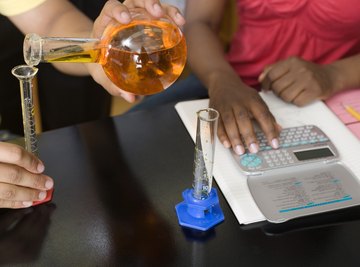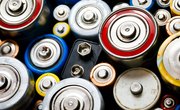
Biomedical medical engineers use applications of traditional engineering to solve problems that occur in the fields of biology and medicine. According to the biomedical engineering society, students who choose the field of biomedical engineering want to be of service to people and apply advanced technology to complex medical problems. High school students who want to take up majors in biomedical engineering should have a good grasp of engineering by conducting several projects.
Identification
Biomedical engineers can design medical instruments, devices and software, as well as conduct research and develop new procedures for clinical medicine. There are many specialized areas of biomedical engineering that range from bioinstrumentation, which is the application of developing devices that diagnose or treat diseases; to genetic engineering, which utilizes biochemistry and mechanics to understand disease processes. To prepare for biomedical engineering, high school student should first take engineering courses and accumulate a working understanding of life sciences.
Cell Membrane Model
One life sciences project high school students can conduct is to construct a cell membrane model. The objective to conducting this project is to have the student investigate what the cell membranes do to regulate what moves in and out of the cells. The cell membrane, being a barrier, controls what materials pass in and out of each cell. By the end of this project the student should be able to explain how large objects are able to pass through smaller cells and a complete understanding on what processes are necessary for any object to pass through the cell. The project is cost effective, running about $5 for the cost of the materials and the estimated time of completion as outlined by the Education website is around one hour.
Energy Drinks Project
This project poses the question “Do energy drinks give you more energy?” In this project, the student will conduct a test study with as many participants -- test subjects -- as they can recruit and give them two different energy drinks each. The student will then instruct the participants to drink the first energy drink when they feel tired and to record any feelings they had afterwards. After a week, the test subjects will be given the other drink with the same instructions. The student will then analyze the records and come up with a conclusion. This project gives future biomedical engineers an introduction to understanding medical and scientific data research.
Magnometer
In this engineering project, students will build a magnometer and demonstrate its uses. Magnometers measure magnetic fields. Moreover, they measure the strength and direction of these fields. They can be used underwater to detect sunken items or above ground to detect buried metals. The student must find out how they are designed and how they work and then construct the magnometer and conduct an experiment showing it in motion.
References
About the Author
April Khan is a medical journalist who began writing in 2005. She has contributed to publications such as "BBC Focus." In 2012, Khan received her Doctor of Public Health from the University of Medicine and Dentistry of New Jersey. She also holds an Associate of Arts from the Art Institute of Dallas and a Master of Science in international health from University College London.
Photo Credits
Creatas Images/Creatas/Getty Images
